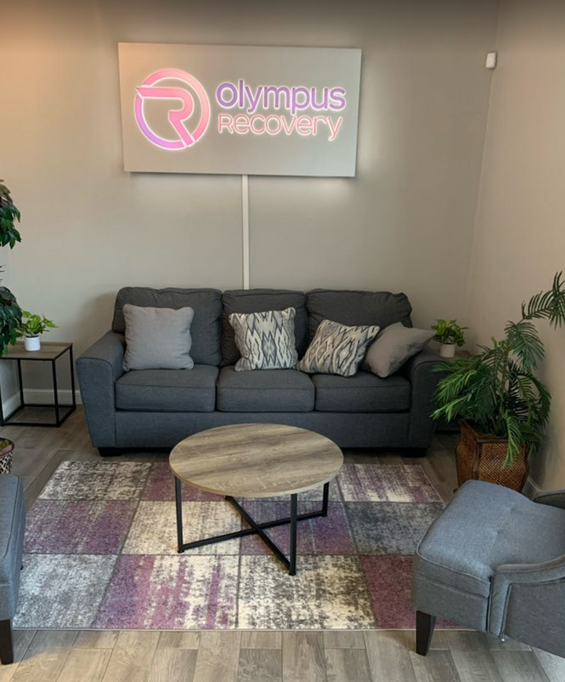“Suboxone” is a name you may have heard thrown around in the opioid recovery community. But, what is Suboxone used for exactly? Is Suboxone an opiate? Keep reading to find out the answers to these and other essential questions.
Are you or a loved one struggling with an opioid addiction? Olympus Recovery can help. Our team specializes in treating addiction and the underlying issues that fuel it. We recognize the needs and experiences of each individual client, and our program was designed with that in mind. Visit our drug rehab in Delray Beach, Florida today.
What is Suboxone?
Suboxone is an opioid prescription drug used to help treat opioid addiction [1]. It’s often used as an induction agent to stabilize opioid users experiencing nefarious withdrawal side effects during medical detoxification because it blocks the so-called “Opioid Effect,” which refers to opioid agonist drugs like heroin and morphine going to work to activate a pain-blocking receptor in the brain, which alters pain perceptions and releases endorphins that mimic pleasure. Opioid antagonist drugs (like Suboxone) negate the effects of opioids by preventing them from activating the pain receptors, which in turn helps patients manage cravings and reduce the symptoms of withdrawal.
Suboxone is a combination of two drugs – Buprenorphine and Naloxone:
- Buprenorphine, is a partial opioid agonist to prevent other opioids from binding to the nervous system’s opioid receptors, which prevents opioids from impacting the brain.
- Naloxone, which is an opioid antagonist drug that reverses the effects of opioid overdoses by blocking and reversing an opioid drug’s effects on the nervous system. Naloxone’s purpose is to prevent people from overdosing on the Buprenorphine in the Suboxone.
To take Suboxone, users place the dissolvable film under their tongues or in their cheeks and let it dissolve.
You’ve likely heard of methadone treatment centers — or maybe you’ve even driven past a billboard or two advertising these facilities. Methadone used to be a popular treatment option for opioid addiction. But, today, healthcare providers prefer prescribing Suboxone as it is less addictive than methadone. It also comes with less harsh side effects that are physical rather than the mental side effects of methadone.
What Is Suboxone Used For?
Suboxone is used in detox and MAT programs in Florida to help an addict go through withdrawal safe and effectively. Opioid withdrawal has some pretty nasty side effects, including:
- Body aches
- Anxiety
- Rapid breathing
- Restlessness
- Goosebumps
- Insomnia
- Sweating
- Fever
- Vomiting
- Cramping
- Diarrhea
- High blood pressure
- Hallucinations
- Seizures
- Death [2]
The side effects are so bad that some people feel that they have no other choice but to continue opioid use to negate the effects. This is why doctors prescribe Suboxone to help alleviate and even eliminate the symptoms of withdrawal to allow patients to recover.

Side Effects of Suboxone on the Body
Although Suboxone helps counteract some of opioid withdrawal’s harshest side effects, it still has side effects of its own due to drug interactions as well as one’s physical and mental health, including:
- Headache
- Constipation
- Nausea
- Vomiting
- Insomnia
- Blurred vision
- Drowsiness
- Sweating
- Mouth numbness
- Painful tongue
- Dizziness
- Fainting
- Inability to concentrate
- Irregular heartbeat
- Backpain
- Anxiety
- Depression
It’s extremely important that Suboxone is administrated by a medical professional in a supervised setting in order to help mitigate the side effects and ensure the detoxification process is successful. Learn more about admissions to Olympus Recovery here.

Warnings and Risk Factors for Using Suboxone
If you remember the answer to our question, “is Suboxone an opiate?” it’s easy to see why it comes with some pretty stark warnings.
The most significant warning issued by the manufacturer states that Suboxone can slow or stop your breathing and may be habit-forming. The warning goes on to say that misusing Suboxone can lead to addiction, overdose, or death.
Pregnant women should not take Suboxone as it can cause the newborn to undergo life-threatening withdrawal symptoms.
Mixing Suboxone with other drugs can also cause deadly side effects, especially those that slow breathing, such as alcohol and benzodiazepines [3].
You should never share Suboxone with anyone else, especially someone who has a history of drug addiction. Misusing Suboxone can lead to addiction, overdose, or even death. You must keep your Suboxone in a safe place where nobody else, especially children, can access it. It is illegal to sell or give away Suboxone.
You should never suddenly stop taking Suboxone without consulting with your doctor, as doing so can lead to unpleasant withdrawal symptoms. Your doctor should devise a customized plan for detoxification and maintenance that will eventually wean you off opiates altogether.
Your doctor will also need to conduct frequent blood tests to ensure your liver continues to function optimally while on the medication.
You should never crush or break Suboxone tablets or inhale or snort the powder. You should also avoid mixing Suboxone into a liquid and injecting it, as this can lead to death.
Keep your Suboxone stored at room temperature in a dark and dry place. Keep the films in the foil pouch while they are being stored. Make sure you discard your empty pouch in a place that kids and pets can’t access. Once you finish your treatment course, do not keep your leftover Suboxone because one small dose can kill someone who has not been prescribed the medication and is not under medical supervision. Ask your doctor or healthcare team where you can safely dispose of the drug.
People who are allergic to Buprenorphine or naloxone should not take Suboxone, and people who have had the following conditions should speak with their doctor before taking Suboxone:
- Breathing problems
- Sleep apnea
- Liver disease
- Kidney disease
- Enlarged prostate
- Urination problems
- Gallbladder problems
- Adrenal gland problems
- Thyroid problems
- Curvatures of the spine that impact breathing
- Alcohol or drug addiction
- Significant head injuries
- Brain tumors
- History of seizures
You should only use Suboxone exactly as prescribed by your doctor, and you must follow all directions on the label. Never take more than the prescribed amount of Suboxone, and tell your doctor immediately if you experience an urge to take more of the medication.
Take the following steps to take Suboxone:
- Before taking Suboxone, it’s recommended to take a few sips of water to moisten your mouth, which helps the film dissolve.
- Place the film(s) — your doctor will prescribe one or two — inside one (or both) of your cheeks or under your tongue.
- Let the films dissolve.
- If your doctor has prescribed a third film, place it inside your cheek or under the tongue after the first two films have dissolved.
- Do not chew or swallow the film. Let it dissolve naturally.

Olympus Recovery Can Help
If Suboxone sounds like something that can help you, Olympus Recovery is here to help. Our compassionate and caring team has experience administering the medication to help our clients overcome opioid addiction and claim their lives back. We also offer cognitive behavioral therapy, experiential therapy, EMDR therapy, support groups and other forms of treatments that can aid with opioid addiction treatment.
Our Admissions staff will work with you and/or family members to make the recovery process as easy and quick as possible. Contact us today to learn more.


